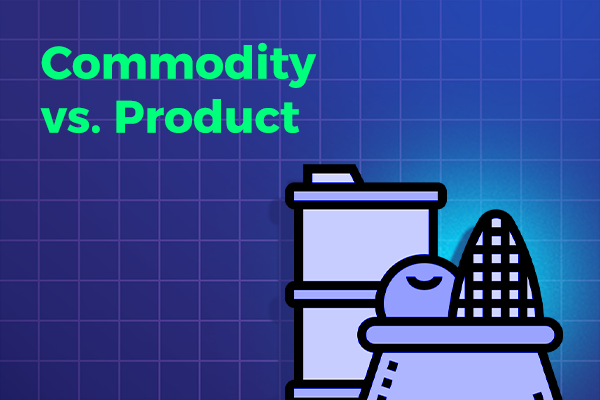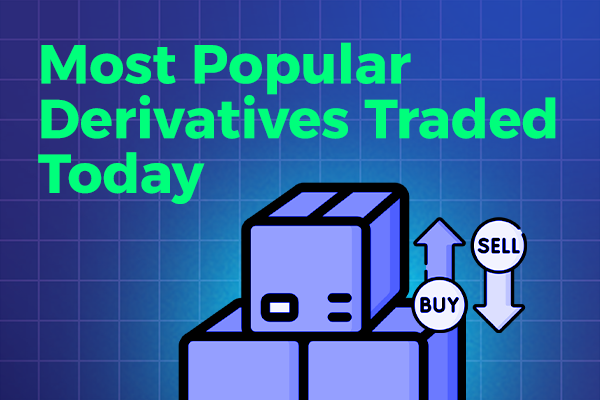When it comes to the world of business and finance, there are numerous terms and concepts that can be confusing for even the most seasoned professionals. One common area of confusion is the difference between commodities and products.
While the two terms may seem interchangeable to some, they actually refer to distinct types of goods that have unique characteristics and roles in the global market. Understanding these differences is essential for anyone hoping to succeed in the world of trading and investment.
Key Takeaways:
- Commodities and products are distinct types of goods in the market.
- It is important to understand the difference between these two concepts for successful trading and investment.
Understanding Commodities
Commodities refer to raw materials or primary products used in production or consumption. These are goods that are standardized and interchangeable with other goods of the same type, regardless of the producer or origin. Commodities can be physical goods like gold, oil, wheat, or cotton, or non-physical goods like energy or emission credits. They are traded on commodity markets where they are bought and sold based on current market prices.
The commodities market is a global marketplace where producers, consumers, traders, and investors come together to buy and sell commodities. Commodity trading involves buying and reselling commodities to make a profit. The prices of commodities are determined by supply and demand factors, weather conditions, geopolitical events, and other economic factors. The price of a commodity is determined by the interaction of buyers and sellers in the market.
Commodities are traded on commodity exchanges, which are marketplaces where buyers and sellers can trade standardized contracts for commodities. These exchanges facilitate trading and price discovery for commodity markets. The most prominent commodity exchanges are the Chicago Mercantile Exchange (CME), the New York Mercantile Exchange (NYMEX), and the London Metal Exchange (LME).
Commodity Prices
Commodity prices fluctuate frequently due to various factors such as supply and demand, economic factors, geopolitical tensions, and weather conditions. Supply and demand determine the price of a commodity based on how much is produced and how much is consumed. Economic factors such as inflation, exchange rates, and political instability can also affect commodity prices. Geopolitical tensions such as wars or sanctions can affect the supply of certain commodities, leading to price fluctuations. Weather conditions like droughts or floods can also impact the production of agricultural commodities and affect prices.
Commodity Futures
Commodity futures are contracts that allow traders to buy or sell commodities at a predetermined price on a specific date in the future. Futures trading allows producers to lock in prices for their goods and protects them from price fluctuations. It also allows commodity buyers to purchase goods at a guaranteed price at a future date. Futures contracts are traded on commodity exchanges and allow traders to take advantage of price movements in the market without owning the underlying asset.
Overall, understanding commodities and their significance in the global market is crucial for investors, traders, and consumers alike. The commodities market plays a vital role in the world economy, facilitating the trade of essential goods and resources that we rely on every day.
Exploring Products
Products are goods or services that are created to satisfy a need or demand in the market. They can be either tangible, such as a physical item that can be touched or held, or intangible, such as a service or idea.
Tangible products include items like clothing, furniture, and electronics, while intangible products include things like insurance policies, software, and education.
Products play a significant role in the economy, as they are the main source of revenue for businesses and organizations. The success of a product depends on its ability to meet the needs and desires of consumers while remaining competitive in the market.
Understanding the differences between commodities and products is essential in today’s economy, as it can impact the way businesses operate and how consumers make purchasing decisions.
Key Differences Between Commodities and Products
While commodities and products may seem interchangeable, there are some key differences between these terms that can have a significant impact on the market. Below are some of the main contrasts:
| Aspect | Commodities | Products |
| Nature | Commodities are raw materials or primary products that are extracted or produced. | Products are a finished good that is intended for consumer use or consumption. |
| Pricing | Commodity prices are determined by supply and demand in the market, and are often subject to wide fluctuations. | Product prices are based on a variety of factors, including production costs, competition, and marketing strategies. |
| Standardization | Commodities are often standardized, meaning that they have a consistent quality and specification across different producers and locations. | Products can be highly variable in quality and features, depending on the brand and manufacturer. |
| Market dynamics | Commodities are typically traded on futures exchanges, with investors using derivatives to speculate on price movements. | Products are primarily sold directly to consumers through retail channels. |
Understanding these differences is essential for anyone operating in the market, as they can affect pricing, investment strategies, and risk management.
Commodity Futures and Exchange
Commodity futures are contracts to purchase or sell commodities at a predetermined price and date, allowing traders and producers to hedge against price fluctuations. Futures trading is an efficient way to manage risk and price discovery, as it enables market participants to accurately reflect supply and demand conditions.
Commodity exchanges are platforms where futures and options contracts are traded among buyers and sellers. These exchanges play a critical role in facilitating market transactions, as they provide standardized contracts, transparent pricing mechanisms, and regulatory oversight.
The most significant commodity exchanges include the Chicago Mercantile Exchange (CME), the New York Mercantile Exchange (NYMEX), and the Intercontinental Exchange (ICE). These exchanges offer a range of commodity contracts, including energy, metals, agriculture, and soft commodities.
Importance of Agricultural and Energy Commodities
Agricultural and energy commodities are some of the most essential resources in the world. These commodities play a crucial role in food production, energy supply, and natural resource management. Understanding the significance of these commodities in the global economy can provide insights into market trends and investment opportunities.
| Types of Agricultural Commodities | Types of Energy Commodities |
| Wheat | Crude oil |
| Corn | Natural gas |
| Soybeans | Coal |
Agricultural commodities such as wheat, corn, and soybeans are traded in large quantities on commodity exchanges throughout the world. These commodities are vital to feeding the world’s growing population and are often subject to weather and climatic conditions that can affect production and pricing.
Energy commodities such as crude oil, natural gas, and coal are essential to powering the world’s economy. These commodities are traded in large volumes on global markets and are sensitive to geopolitical events, such as changes in supply and demand, natural disasters, and political tensions.
- Agricultural and energy commodities are traded globally, providing investors with opportunities to diversify their portfolios.
- Commodity prices are often subject to sharp swings in response to changes in supply and demand, weather and climatic conditions, and geopolitical events.
- Agricultural and energy commodities can also be influenced by government policies, such as subsidies, tariffs, and regulations, which can impact production and pricing.
“Agricultural and energy commodities are some of the most fundamental resources in the world. As such, they play a crucial role in the global economy and provide investors with opportunities to participate in these vital markets.”
Conclusion
In conclusion, understanding the differences between commodities and products is crucial in today’s market. Commodities are raw materials or primary agricultural and energy products traded for a price on a global exchange. On the other hand, products are tangible or intangible goods created by processing commodities or providing services to consumers.
While commodities play a significant role in the global economy, they are subject to price fluctuations due to supply and demand imbalances, as well as geopolitical and weather-related factors. Conversely, products are more stable in terms of pricing and market demand, as they undergo added value creation and branding.
Moreover, the commodity market offers futures trading and exchange mechanisms that facilitate risk management and price discovery for both producers and consumers. By trading on a commodity exchange, parties can lock in a price for goods or services to be delivered at a future date, thereby reducing uncertainty and increasing market efficiency.
Finally, agricultural and energy commodities constitute vital resources that affect food security and energy supply worldwide. As such, policymakers and market participants must pay close attention to these commodities’ prices and availability to ensure sustainable development and economic growth.
Stay Informed
If you’re interested in keeping up-to-date with commodity and product market news, there are various resources available, such as financial news websites, industry-specific publications, and professional associations. By staying informed and understanding the dynamics of the market, you can make informed decisions and navigate the complexities of the global economy.
FAQ
Q: What is the difference between a commodity and a product?
A: Commodity refers to a raw material or primary agricultural product that can be bought and sold, whereas a product can be either a tangible or intangible item that is created for sale or consumption.
Q: What are commodities?
A: Commodities are raw materials or primary agricultural products that can be traded in the commodities market. Examples include crude oil, gold, wheat, and soybeans.
Q: What are products?
A: Products can be either tangible items like clothing or electronics, or intangible items like software or services. They are created for sale or consumption in the economy.
Q: What are the key differences between commodities and products?
A: Commodities are typically raw materials with standardized quality and pricing, whereas products can vary in quality, pricing, and features. Commodities are also traded in specialized commodity exchanges, while products are sold in various markets.
Q: What is commodity futures trading?
A: Commodity futures trading involves buying or selling contracts for the future delivery of commodities at a predetermined price. It allows traders to speculate on price movements and manage risk in the commodities market.
Q: Why are agricultural and energy commodities important?
A: Agricultural commodities play a crucial role in food production and supply chains, while energy commodities like oil and natural gas are essential for powering economies. They are vital resources that impact global markets and economies.



